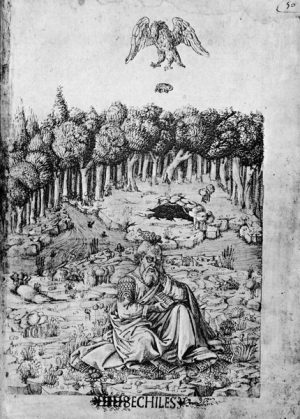Strange Weather
Time & Location
Class meetings: Tu, per. 7, Th, pers. 7–8, Matherly Hall 0113
Office hours (Spring 2024): 4105 Turlington Hall, Tu, 3–5 PM and by appt.

“We shall pick up an existence by its frogs” – Charles Fort, Lo! (1931)
This course is a survey of and a reflection on the modern literary imaginary of strange weather, by which I don’t mean merely “unseasonal” wind, rain, sleet, or snow. I mean the sorts of outlandishly unexpected and heretofore never seasonal phenomena that have manifested in one form or another in a long history of stories about the lower and upper atmospheres.
For example, the matter reported to have fallen from a region just beyond the Earth’s atmosphere that the American chronicler of occult phenomena and renegade philosopher of science Charles Fort (1874–1932*) christened the “Super-Sargasso-Sea.” This included a parade of “damned projectiles” such as fish (small and large, live, dead, fresh and rotting), frogs, insects, periwinkles, snakes, gobbets of flesh, blood, mud, colored rains, edible solids, ice, punk, cannonballs, unworked and worked pieces of stone, etc. – there is a lot more of this kind of thing in centuries of credible reports of anomalous falls, torrents of weird stuff that shouldn’t ever have been up there and shouldn’t ever have fallen down here.
(A related history of damned projectiles. In the first century of the Common Era Pliny the Elder claimed that the ancient Greek poet Aeschylus was killed by a tortoise falling on his head from an open sky. It took nearly all of the 18th century and most of the 19th for European scientists to agree that rocks do sometimes fall from the heavens, even though the Greeks had documented the reality of meteorites as early as the fifth century BCE, and the Sumerians had done so two and half millennia earlier. Perhaps Aeschylus was watching out for the wrong sort of space junk?)
We will read from Fort’s resolutely digressive and unsystematic writings on anomalous falls and strange weather, and from a related canon of short and long fiction recounting these phenomena – mostly early aeronautic fiction and science fiction from the latter half of the nineteenth century through to the first half of the twentieth century, when Fort’s influence on Anglo-American sf was considerable – and from modern scientific literature that tries to make sense (i.e., explain in rational terms or explain away altogether) honest reports of odd detritus falling from over-crowded skies.
And then we’ll turn to atmospheric anomalies and the emerging aerial imaginary of the late Anthropocene epoch when, as a common and unnervingly accurate cliché puts it, “abnormal [weather] is the new normal.” We’ll ask this question: what might we learn from fictions of the early technoscientific era, when human bodies first ventured into the skies, about the sources of our anxieties regarding unstable and unpredictable planetary weather, and from the abundant evidence of a deep human dread, as ancient as storytelling itself (e.g., The Epic of Gilgamesh, the oral traditions of Aboriginal Australians), of an abject plenitude wandering above our heads?
Graded writing requirements include three short papers in response to assigned readings and a short report on a UF virtual symposium on Fortean topics. Extra-credit service learning activities in the course include opportunities to take part in supervised volunteer tree plantings in and around the city of Gainesville.
* 2024, you’ll note, is the sesquicentennial of Charles Fort’s birth.
Course syllabus